#Goodwood Operation
Explore tagged Tumblr posts
Text
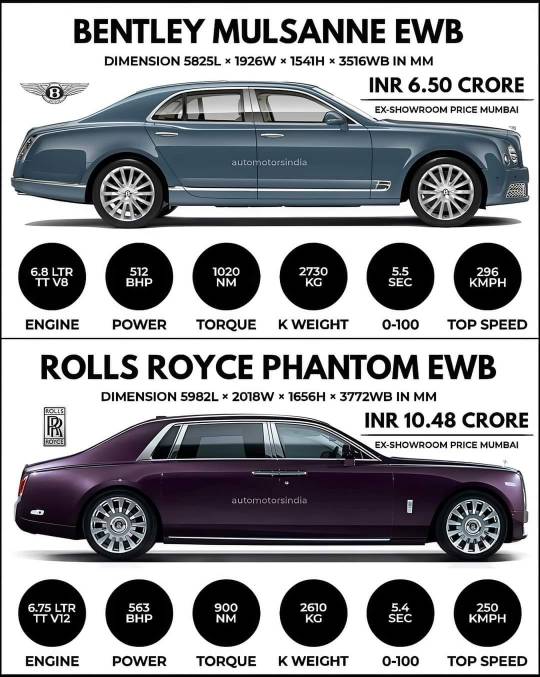
Here are ten more lesser-known facts about Bentley and Rolls-Royce:
1. Bentley's Le Mans Dominance: Bentley gained fame in the 1920s for winning the 24 Hours of Le Mans race multiple times, including a streak of four consecutive wins from 1927 to 1930.
2. Rolls-Royce's Silent Engine Test: Rolls-Royce famously tests their engines in a specially designed room called the "Silent Room" to ensure they operate silently and smoothly.
3. Bentley's Connection to W.O. Bentley: Bentley Motors was founded by Walter Owen Bentley, known as W.O. Bentley, in 1919. He was deeply involved in the design and engineering of Bentley cars until the company's acquisition by Rolls-Royce.
4. Rolls-Royce's Bespoke Options: Rolls-Royce offers extensive customization options for their cars, allowing customers to create truly bespoke vehicles tailored to their preferences, from materials to finishes.
5. Bentley's Continental GT Lineage: The Bentley Continental GT, launched in 2003, revived the Continental name which was previously used for Bentley's famous racing cars and luxury coupes in the 1950s.
6. Rolls-Royce's Parent Companies: BMW acquired the rights to the Rolls-Royce brand in 1998, leading to the formation of Rolls-Royce Motor Cars Ltd., while the original Rolls-Royce plc continued as an aerospace company.
7. Bentley's Crewe Headquarters: Bentley Motors is headquartered in Crewe, England, where all Bentley cars have been manufactured since 1946. Crewe is also known for its long tradition of luxury car production.
8. Rolls-Royce's Goodwood Factory: Rolls-Royce Motor Cars operates a state-of-the-art manufacturing plant in Goodwood, England, where every Rolls-Royce car is meticulously handcrafted by skilled artisans.
9. Bentley's Continental Flying Spur: The Bentley Continental Flying Spur, a luxurious four-door sedan, was first introduced in 2005 as a companion to the Continental GT coupe, sharing its platform and design ethos.
10. Rolls-Royce's Phantom Name: The Rolls-Royce Phantom nameplate has been in continuous use since 1925, making it one of the longest-standing models in automotive history and synonymous with luxury and prestige.
These additional facts further illustrate the deep heritage, craftsmanship, and unique characteristics that define Bentley and Rolls-Royce in the automotive industry.
44 notes
·
View notes
Text
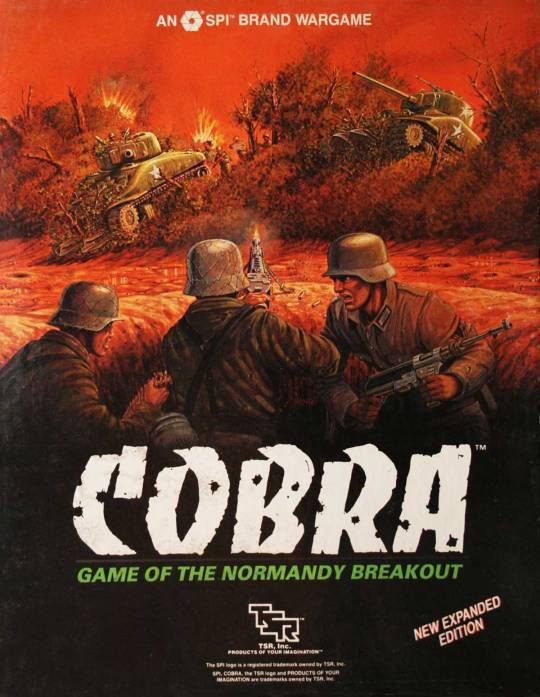
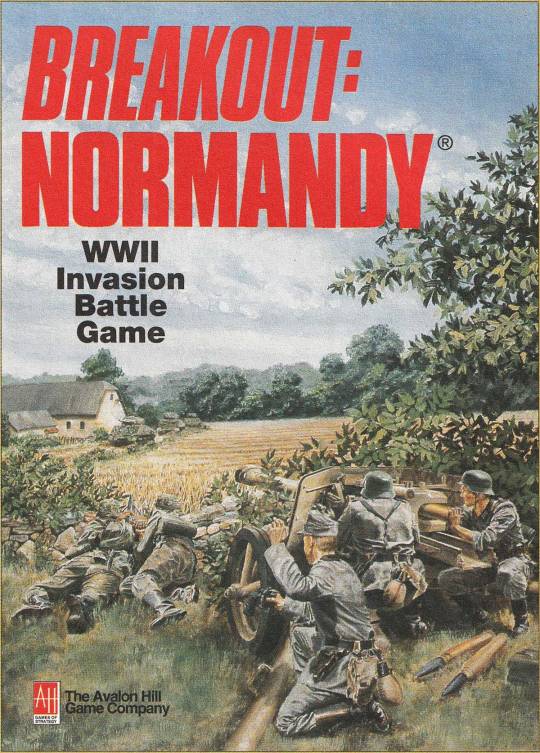
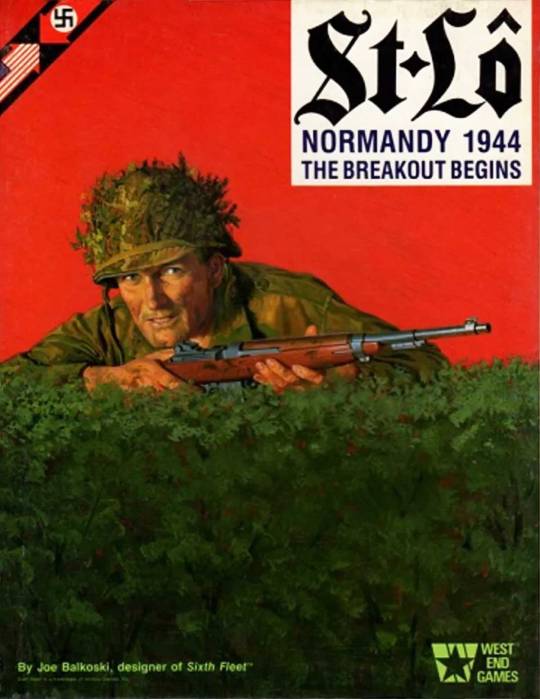
Wargames of D-Day, June 6, 1944, and the Normandy breakout, Operations Cobra and Goodwood
Cobra: Game of the Normandy Breakout, TSR, 1984, Larry Elmore credited as illustrator (designed by BE Hessel and updated by David James Ritchie, originally published by SPI in Strategy & Tactics magazine #65, 1977, then as an SPI boxed game in 1978; the TSR edition expands the scope by including the D-Day landings and the battles of Cherbourg and Caen)
Breakout: Normandy, Avalon Hill, 1993, Michael Reis box art with text recolored for ad in The General V29 N2 (designed by Don Greenwood and James Stahler; republished in 2011 by L2 Design Group)
St Lo: Normandy 1944: The Breakout Begins, West End Games, 1986, with Robert Berran box art (designed by Joseph M. Balkoski; republished in 2021 by War Drum Games/Quarterdeck International)
#D-Day#D Day#WWII#wargame#board game#Larry Elmore#Michael Reis#Robert Berran#Avalon Hill#TSR#West End Games#WEG#Cobra: Game of the Normandy Breakout#Breakout: Normandy#St Lo: Normandy 1944#BE Hessel#David James Ritchie#Strategy & Tactics#SPI#Don Greenwood#James Stahler#Joseph M Balkoski#Joe Balkoski#Operation Cobra#1980s#1990s
44 notes
·
View notes
Text







On May 19th 1958 the Scottish Racing driver Archie Scott Brown died from his injuries after a crash at the Spa racing circuit in Belgium.
Archie was born in Paisley, the only child of William and Jeanette Scott Brown. Bill, as his father was always known, had been an observer in the The Royal Flying Corps during the first world war, and had raced an Alvis (for whom his was a dealer) at Brooklands and other circuits and his mother had also twice raced at Brooklands, both were keen motor racing enthusiasts.
Bill built a small car powered by a lawnmower engine for his 10th birthday and to aid his mobility when Archie and his passion for motoring began.
His mother had caught German measles when she was pregnant with Archie and when he was born he was dreadfully handicapped with radically deformed legs and right arm. He underwent 22 operations to repair and add as much function as possible to his partly formed right arm and badly deformed legs and feet. without which he would not even have been able to walk.
His father built him a miniature car which sparked his imagination and passion for motoring throughout his life.
Determined to lead as full a life as the next man, he was always bursting with vitality and exuberance, and earned a living as a travelling salesman in order to fund his motor sport ambitions.
Archie was quite short (five feet) and made light of the disabilities. Infact, as is often the case, it was one of nature’s few compensations for the ills it sometimes brings and in Archie case it was an amazing sense of balance which proved invaluable when riding to school on a vicious retired pit-pony.
On leaving school he took a job as a salesman for Dobie's Four Square Tobacco in Cambridge in 1949, staying 6 years.
This amazing sense of balance was also noticeable when he started racing in 1951 with an MG he had purchased with a modest legacy from his Grandmother and it soon became clear that Archie's abilities behind the wheel were of a higher order.
It was at this time that he met up with Brian Lister and Don Moore. They realised that Archie was the best driver they had seen and soon had Archie driving Brian Lister’s fearsome Tojeiro special.
In 1954 when Brian Lister started to build cars bearing his own name, he entered Archie in the British Empire Trophy race to drive the Lister with an MG engine tuned by Don Moore. There were protests due to his appearance and he was scandalously banned from racing by the RAC for two months. The press launched a campaign in support of Archie and by the Summer of 1954 his licence was reinstated.
Lister switched to Bristol power for 1955 and Archie was winning club and national events all over the country including the Empire Trophy race that year. He also raced a Connaught at Brands Hatch in the Boxing Day Meeting and taking a win in the Formula Libre Air India Trophy Race over 15 laps
In 1956 Brian Lister changed to Maserati engines but it was an unhappy alliance however, after his performance in the Connaught at the end of 1955, Connaught offered him a works drive for 1956.
His first race was the for Glover Trophy at Goodwood in April. It started well when he qualified 2nd just .6 of a second behind Moss. However in race he retired with engine problems. He was on pole for the BARC Aintree '200' later in the month, a full 3 seconds ahead of the BRM of Mike Hawthorn in second. Once again the engine let him down and he retired on lap 13.
He finished a fine second in the BRDC International Trophy at Silverstone in May in the Connaught B-Type. In June he was on pole for the Aintree '100' but once again engine problems forced him into retirement. His performances cotinued to draw admiration from everyone including Fangio, who thought that his car control was phenomenal.
Next up was Archie's only World Championship appearance, the British Grand Prix on the 14th July. He qualified a respectable 10th but in the race he lost a wheel on the 10th lap and his day was over. The Vanwall Trophy later in the month provided further frustration. He then travelled to the Italian Grand Prix at Monza in September. He put the Connaught on provisional pole but his entry was then refused on medical grounds. His response was to shrug his shoulders, fly to Geneva and buy himself a new watch.
In 1957, he had the opportunity to race the works BRM in the British GP but, after a brake problem in testing and discussions with friends, he was persuaded to decline the offer. However, he continued to race in sports cars and returned to drive for Brian Lister.
After Brian's unhappy time with the Maserati engines, he switched to Jaguar power in 1957. With Archie at the wheel, the Lister-Jaguars, affectionately known as the Knobblys, became the benchmark for front-engined sports racing cars. Even it's poor brakes didn't stop Archie. If they failed, he announced, he would: “carry on without them, old boy.” Known for his courageous driving style, he was often to be seen getting his Lister very sideways indeed. He entered 14 races in 1957, winning 12 of them. The car then went into limited customer production for the 1958 season.
Archie was becoming increasingly frustrated by his inability to gain an international licence. However in 1958 he finally obtained permission to race in New Zealand, winning the Lady Wigram Trophy. He was then in America at the end of March for the 12 Hour race at Sebring and there were plans for a Lister Le Mans entry.
Archie had become good friends with another Archie, one Archie Butterworth, a somewhat eccentric inventor. Scott Brown had become a great enthusiast for Butterworth’s designs. “The Archies” laid down plans for a season of AJB powered Formula 2 racing and at the beginning of 1958 a Cooper chassis was acquired and an entry filed for the Formula 2 class in the Monaco GP but in the end though the car wasn’t ready.
Teamed with Archie Scott Brown, Archie Butterworth had thought that he may finally realise his AJB Grand Prix project and was planning a purpose designed 2.5-Litre Flat-8 engine to compliment his highly developed AJB gearbox.
Over the few years he was in the sport he had developed a fierce but good-natured rivalry with rising American driving talent Masten Gregory. In May, Masten had beaten Archie at Silverstone. They were both driving Listers, Masten for Scottish outfit Ecurie Ecosse, Archie for the works team. The Ecurie Ecosse Lister had modified from wings and it has been suggested that these provided greater downforce. Whatever the reason Archie was well beaten in what were similar cars. While waiting for Butterworth's Formula 2 car, Archie went off to drive the works Lister at Spa on May 18th, keen to take revenge on Gregory for his defeat at Silverstone.
The weather was mixed and on lap six, Archie, in the lead, was in a customary drift, the car hit standing water. The car aquaplaned and right front wheel clipped a road sign. The axle snapped and the car plunged over the verge and exploded. Two gendarmes pulled him out but he succumbed to his injuries the next evening, less than a week after his 31st birthday.
In his short career Scott Brown scored 71 wins, 15 of which came in international competition. He died as he had lived, on the limit, and probably "going too bloody fast"! His memorial plaque at Snetterton states that he “represented everything that was best in the sport”.
An fascinating anecdote from Ken Wright: It is interesting to note that due to technical advances, historic racing cars today generally post lap times faster than those of their heyday. None of the highly developed Lister Jaguars racing today, even in he hands of the likes of Gary Pearson, have beaten ASB's contemporary times.
His memorial plaque at Snetterton states that he “represented everything that was best in the sport”. That would have been true for any sport that Archie had been involved with. When he was banned from the 1956 Grand Prix, he just shrugged his shoulders, flew to Geneva and bought himself a new watch.
He died as he had lived, on the limit, and probably ‘going too bloody fast’! He was thirty-one.
8 notes
·
View notes
Text

A British Army M4 Sherman Crab flail tank crosses a Bailey bridge over the Orne, as it moves up to the start line for Operation 'Goodwood', 18 July 1944
#july#Battle of Normandy#western front#wwii#Liberation of France#M4 Sherman#tanks#american tanks#american armor
44 notes
·
View notes
Text
A Tesla Cybertruck, which is illegal to drive in the UK due to safety concerns, has been seized by police in Greater Manchester.
Officers spotted the eye-catching vehicle, which carries a price tag of about £48,000, in Whitefield, Bury, and stopped the driver on Thursday night.
In April 2024, Tesla recalled thousands of its new Cybertrucks, which weigh more than three tonnes, after concerns about its accelerator pedals.
In a social media post, Greater Manchester Police (GMP) said: "Whilst this may seem trivial to some, legitimate concerns exist around the safety of other road users or pedestrians if they were involved in a collision with the Cybertruck."
It said the vehicle, which was registered and insured abroad, was confiscated and they had reported the driver, who is a UK resident.
Their post added: "The Tesla Cybertruck is not road-legal in the UK and does not hold a certificate of conformity."
The Cybertruck, which is made of rocket-like, bullet-proof steel materials, was launched in 2019.
The vehicle has been on a promotional tour across the Middle East and Europe, including at the Goodwood Festival of Speed in the UK in 2024.
However, it has not yet passed UK road safety tests.
GMP said the car that was seized had been referred to Operation Wolverine, which was established in 2007 to target drivers without insurance.
The owner will have to prove ownership and correct insurance prior to release.
#uk news#fucking hilarious#cybertruck#deplorean#wankpanzer#elon musk#elongated muskrat#this blog is opposed to the continued existence of elon musk
2 notes
·
View notes
Text
Quadrant posted a story on ig two hours ago with 'smooth operator' as background music... the story is completely unrelated to Carlos (I think it's about goodwood festival).
But WHY would they randomly choose that song??
They really ARE soft launching Carlando now. It's real! ✨
33 notes
·
View notes
Text
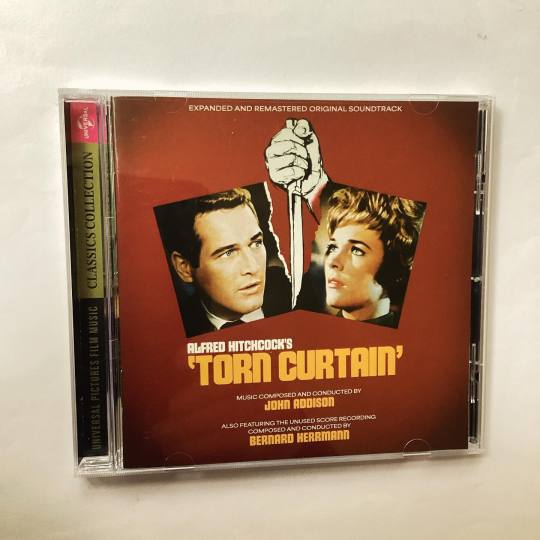
Can you imagine Steven Spielberg humiliating his composer John Williams in public?
That’s what happened during the post-production of Alfred Hitchcock’s movie “Torn Curtain”.
As Bernard Herrmann, who had delivered the goodies on Hitchcock’s classic movies - the screeching violin in “Psycho”, the obsessive motifs of “Vertigo” - was recording his new score, Hitchcock shut the recording session down and stormed off.
He then did what the studio had been suggesting all along by going for a “younger” type of music. (You can read “younger” as less edgy and melodic instead of rhythmic.)
The 100% melodic British film composer John Addison took the baton and wrote a romantic score with some spy movie elements. He created a Cold War, Eastern-European mood with very simple means, for instance.
Addison is best known for scoring the epic World War II movie “A Bridge Too Far” (Richard Attenborough).
Uncanny detail: as a young man, tank commander Addison participated in the Normandy landings and got wounded during the tank battle that liberated the French city Caen. Operation “Market Garden”, shown by Attenborough, came after operation “Goodwood”, the invasion.
#john addison#alfred hitchcock#hitchcock#film music#soundtrack#film score#movie music#film composer#composer#composers#orchestra#music#musician#musicians#movie#movies#film#films#torn curtain#cold war#cd#cds#bernard herrmann#cd collection#cd collector#cd cover#paul newman#julie andrews#spy movies
3 notes
·
View notes
Text
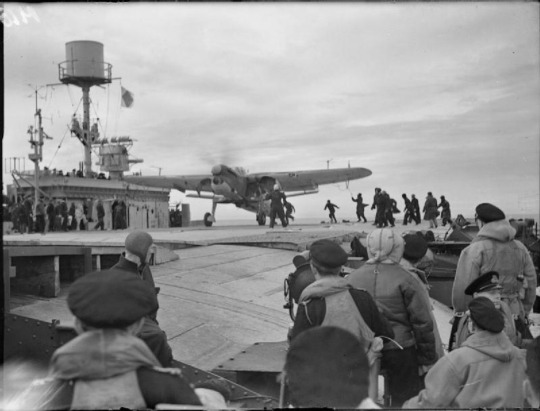
#onthisday in 1944 Operation Goodwood began. This saw the German battleship Tirpitz targeted by the Fleet Air Arm. 35 Fairey Barracudas took part and despite a number of attacks the Tirpitz was not heavily damaged.
@classicwarbirds via Twitter
11 notes
·
View notes
Text
0 notes
Video
428 de Havilland Tiger Moth DH 82A (1942) G-ANEN by Robert Knight Via Flickr: de Havilland Tiger Moth (1931-34) Engine 130 hp (97 kW) de Havilland Gipsy Major piston engine Production 8,868 Registration Number G-ANEN AIRCRAFT ALBUM www.flickr.com/photos/45676495@N05/albums/72157626970256152 The de Havilland DH.82 Tiger Moth is a 1930s British biplane designed by Geoffrey de Havilland and built by the de Havilland Aircraft Company. It was operated by the Royal Air Force (RAF) and other operators as a primary trainer aircraft. The Second World War had RAF Tiger Moths operating in other capacities, including maritime surveillance and defensive anti-invasion preparations; some aircraft were even outfitted to function as armed light bombers. The Tiger Moth remained in service with the RAF until it was replaced by the de Havilland Chipmunk during the early 1950s. The DH82A Tiger Moth, sometimes refereed to a Tiger Moth II is a two seat primary trainer aircraft. Powered by a 130 hp (97 kW) de Havilland Gipsy Major piston engine and fitted with a hood over the rear cockpit for blind flying instruction. Named Tiger Moth II in RAF. Tiger Moth G-ANEN Was taken on charge as DE410 at 10 MU RAF Hullavington, Chippenham, Wiltshire, 25.03.1942. Transferred 23.8.42 To 28 EFTS RAF Pendeford, Wolverhampton, Staffordshire 23.8.42 coded “93”. To 9 MU RAF Cosford, Wolverhampton, Staffordshire 21.7.45. To 23 RFS (Reserve Flying School). RAF Usworth, Sunderland, County Durham 26.1.50 coded “RSA-G”. To 7 RFS (Reserve Flying School) RAF Desford, Leicestershire 26.3.51. To 9 MU RAF Cosford, Wolverhampton, Staffordshire 14.11.51 for storage pending disposal.. Struck off charge charge when sold 15.10.53 to Association of British Aero Clubs. UK civil registered asa G-ANEN (C of R R4158) 2.10.53 to Link Training Services Ltd, London SW3 (aircraft based at Elstree Aerdrome, Elstree, Herfordshire). C of A not known. Registration G-ANEN cancelled 11.10.53 as 'sold to Belgium - OO-ACG'.. Delivered 25.10.53 and re-registered in Belgium as OO-ACG [C of R 995] 18.2.54 to L Vlieghe, Lier/Keerbergen. Re-registered 22.3.55 to D Jordens, Tienen/Aalst. Re-registered 12.6.57 to J Bogaerts, Grimbergen. Re-registered 4.3.58 to Publiciel sprl, Grimbergen. Registration G-ANEN 2.4.92 restored (C of R G-ANEN/R2) to Michael David Souch, Durley, Hants. Rebuilt at Hedge End and reflown in 1995; C of A renewed 21.7.95. Re-registered (C of R G-ANEN/R3) 22.3.96 to Robert James Jackson, Salisbury. Wiltshire [aircraft based at Old Sarum]. Sold 7.2000 and re-registered (C of R G-ANEN/R4) 15.5.2001 to Dr Anthony John Douglas Douglas-Hamilton, Chichester (based Goodwood). Damaged 17.3.2003 in a forced landing at Goodwood, Chichester, West Sussex. According to the AAIB Report into the incident:. Repaired and returned to service. Damaged when tipped on nose on take-off Goodwood 13.7.2005..Repaired and returned to service. Sold 8.2007 (but not re-registered) to David Wildridge & Simon Holland, Bicester. Oxfordshire. Re-registered (C of R G-ANEN/R5) 18.5.2009 to David Brian Wildridge, trustee of the G-ANEN Group, Bicester, Oxfordshire. C of A replaced by Permit to Fly 28.11.2014. Re-registered (C of R G-ANEN/R6) 14.5.2019 to Timothy William Kenyon Emrys-Roberts, trustee of the G-ANEN Group, Bicester, Oxfordshire. Currently registered and airworthy. Diolch am 89,103,703 o olygfeydd anhygoel, mae pob un yn cael ei werthfawrogi'n fawr. Thanks for 89,103,703 amazing views, every one is greatly appreciated. Shot 10.10.2021 at Bicester Scramble, Bicester, Oxon. Ref. 122-428
#de.Havilland#British#1940s#1942#Aircraft#Airoplane#Plane#Tiger.Moth#DH.82A#Tiger.Moth.II#G-ANEN#Bi-plane#Geoffrey.DeHavilland#Bicester#Bicester.Autumn.Scramble.2021#flickr
1 note
·
View note
Text
What Are The Common Signs Your Computer Needs Repair?
Our computers are necessary for work, play and remaining connected in the modern digital world. When problems arise with your computer, it can be upsetting and annoying. That’s where the expert computer repair service comes in to troubleshoot your issues. In this guide, we will explore some of the common signs that your computer might need professional attention.
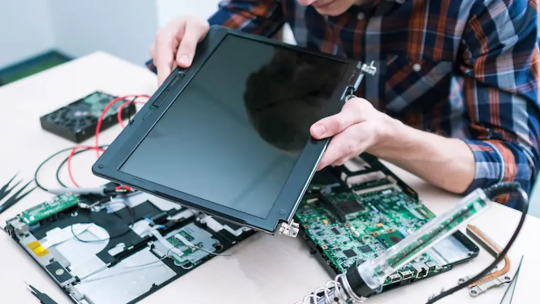
Frequent Crashes
Regular system freezes, crashes or the dreaded "blue screen of death" (BSOD) are telltale signs of deeper problems. Software conflicts, overheating and hardware malfunctions are possible causes of these issues. The group of professionals may carry out thorough diagnostics to pinpoint the cause of the problems and provide suitable options for computer repairs in Adelaide.
Software Errors
Do you frequently get error messages or have program crashes? These flaws might cause disturbances to your work process and suggest deeper faults with your operating system or software programs. The professionals in computer repair in Adelaide are capable of fixing compatibility problems, updating or reinstalling troublesome apps and troubleshooting software faults.
Hardware Component Failures
It is necessary to seek expert services for computer repairs in Goodwood if any particular hardware components such as the keyboard, mouse or display are not working properly. The specialists can fix or swap out certain hardware parts to get your computer back up and running.
Ignoring these typical indicators of computer problems might result in more serious problems, longer downtime and possibly even data loss, all of which can be expensive and annoying. We are your go-to source for expert computer repair and maintenance services because of this. The group of professionals is committed to identifying and fixing a variety of computer issues so that your gadget functions properly. Trust the professionals for your computer repair and don’t look for a quick fix. Recognising these common signs of computer trouble is the first step towards timely and effective repair.
0 notes
Text
Mika Hakkinen y el McLaren Solus GT emocionan en Goodwood
El bicampeón de Fórmula 1 condujo el súper GT británico decorado como el McLaren MP4/13 con el que logró su primera corona en la Máxima.
El finlandés Mika Hakkinen, dos veces campeón mundial de Fórmula 1, volvió a ponerse al volante de un McLaren como en sus viejos tiempos en la máxima categoría. Aunque esta vez fue sobre un McLaren Solus GT y nada menos que en el Festival de la Velocidad de Goodwood de este año. El modelo conducido por Hakkinen, monarca de la F.1 en 1998 y 1999, fue personalizado por McLaren Special Operations…
0 notes
Text
Looking Back at the Silverstone Festival 2023, What A Blast it Was!
Looking Back at the Silverstone Festival 2023, What A Blast it Was!
Hi All,
So I just thought I’d look back at last Weekend’s Silverstone Festival which I had been looking forward to for a long time, for 2 reasons really, firstly we finally get to race our 1961 Lotus Formula Junior, 18 months after buying her and after a 12 month restoration, and also we were invited to drive the Nascar around the Silverstone Grand Prix track for some demo runs so I finally get to see what it is capable of as since owning the 24 I have really only driven it up the Goodwood FOS hill climb, as amazing as that is it isn’t really what the car was designed for so at last I’ll be able to give it some beans down the long straights at Silverstone.
Thursday.
The latest Custodian of this gorgeous 1961 Lotus Formula Junior.
We were going to be at Silverstone for 4 days, the Thursday being a test day in the Lotus, this was to be my first real drive in the Junior so I was certainly keen to get out and see what she was like, we were only going to get 2 x 25 minute sessions but I am well aware that seat time is everything in motorsport so I was keen to get every second I could. Unfortunately both sessions had red flags in the middle of them so we didn’t get as much time as I’d have liked, in my head I wanted to get down to a 2 minute 38 second lap as that was the time a friend of mine achieved in his first outing last year in his Lotus Type 18 Junior, all the could manage though was a 2:48 so plenty of time still to find.
She drove well though, the engine seems to have a dead spot between 4-6000 revs but the power really comes in between 6-9000 revs so it is just a matter of keeping it in that power band, also the gearbox is a little temperamental, there is no synchromesh on it so it is just a matter of throwing it in which does throw up the odd grinding noise from time to time, what I soon realised was that I need to learn to heel and toe to match the revs to the gear change, I have never done this before and I did try it a few times and only managed to get it right once which worked a treat, the other times I tried went horribly wrong and I missed the apex by a mile, definitely something to work on though as definitely helps.
The real highlight of Thursday was that when coming in at the end of the second test session Jim Clarks Lotus 25 overtook me and I followed it down the Hangar straight which was incredible, the Type 25 is by far my favourite F1 car and I’m a huge Jim Clark fan so that made my weekend, that really was priceless for me.
Friday.
So today was qualifying, luckily it was dry but I was a bit concerned that with 60 cars on track it would be difficult to get any clean laps in but I needn’t have worried as it wasn’t too bad at all, so with a 2:38 lap time in mind I gave my best for the 20 minute session but only got down to a 2:41 and an overall qualifying position of 42 out of 56, not great but after only spending about 30 minutes driving the car in total I guess it could have been worse and a lot of the drivers are Pro’s for this event as there is a lot of prestige in winning the Silverstone Festival. I was really struggling with 2nd gear in the slow left hander ‘The Loop’ which was costing me a lot of time, later I would find out it could be taken in 3rd which would make things a lot easier, and faster.
Then at lunchtime we got to take the Nascar out for it’s first proper drive, since getting the car over from America last year we had always had a water overheating issue, now we weren’t sure if it was a problem or if as the car is designed to run at over 200 mph then it just wasn’t getting enough airflow, around Silverstone this would help to figure this out as we could get some serious speed up, it turns out that it really needs to be moving at speed for the temps to stay in a safe operating window as once we got going then it stayed very constant.
I have to say that the Nascar really couldn’t be anymore different to the Lotus Junior but what an experience it was nailing the throttle down the Hangar Straight, it was like Hyperspace as the car just fly’s, with 900 horsepower the acceleration is off the scale, before you know it Stowe is approaching quicker than you’d like and you have to put a lot of trust that the brakes are going to do their job, it really was an incredible experience but before you know it our time was up, at least we’ll have runs on Saturday and Sunday.
Saturday.
Feeling a little Nervous
Today was a big day, my first race in the Junior and my first ever single seater race, now I don’t generally get nervous but I had never been on a grid this big especially with people that are used to racing this type of car, as you can see from the above pic I was a little apprehensive.
This wasn’t helped that the race was at 9am so I needed to be ready for around 8am but when I got to the garage the 20/22’s battery was totally dead, we didn’t realise that there was no alternator on these cars and you are supposed to put the battery on trickle charge to keep it alive when not being driven so it was looking quite unlikely that I would get to start my first planned single seater race as we only had a few minutes to find a solution. Luckily for us, not for one of my fellow computers though who’s car had an engine issue, we asked around and as he couldn’t race he very Kindly lent us his battery, what a gent, so the race was back on.
To make things even more nerve wrecking we had a lot of rain overnight and the track was still pretty wet so I had no idea what to expect, I was assuming a fair bit of sliding around. So anyway the race started and off we went, as I thought there was a lot of understeer and I went off the track a couple of times, a couple of laps in to the race as I came round Copse I saw my friends Lotus 18 in the gravel looking very sorry for itself, unfortunately he had made contact with another car and had rolled it, luckily he was OK but the car now needs a total rebuild due to a bent chassis, it really was horrible to see this, in the end though I had a great race with one of the front engined Juniors, I felt I was a fair bit quicker than him but didn’t want to force anything so followed him home to finish 38th so at least we had moved forward.
Unfortunately the Nascar demo run was cancelled due to rain which was a shame but it was the right decision as they really are a handful in wet conditions, every event we took the 24 this year had session cancelled due to rain, really sums up the summer of 2023 I guess.
Sunday.
Feeling Racey!
Here we are at the last day, driving in I had to smile as most people have a nice lazy start to a Sunday but my alarm went off at 5.30am, I then drive an hour to Silverstone then get strapped into a race car at 8.30am and am then straight into a race at 9am, certainly a great way to wake you up, luckily the adrenaline kicks in and once the lights go green you are in the zone.
I felt much more relaxed for race 2 having already got one race start successfully under my belt and it was bone dry today so I was keen to really attack for the 20 minute race. Unfortunately we had a full course yellow for a couple of laps after the first lap as someone was off at the side of the track so the race only lasted for around 10 mins but I had another great race with front engined Junior where we kept swapping positions and I ended up coming out in front and I actually got my lap time down to a 2min 37sec in the race, so over the course of the weekend we had gained around 11 seconds so I am confident we can find a lot more time with more time in the car, in the end we bought her home in 33rd so around mid pack which I was really happy with for a first weekend. It is funny as before the weekend started I just wanted to get through it with no issues and to make sure the car was OK, basically use it as a glorified shake down but once that visor drops all those thoughts go out the window and all you want to do is beat the person in front.
Next up at the end of the day was our last run in the Nascar, this time without a safety car so we could give it maximum attack and this was the first time that I felt that I was really driving the 24 rather than just holding on for dear life, such an amazing car, I feel more comfortable driving the Junior but what an experience the Nascar is, the noise and power really is something else.
So there we go, what an amazing 4 days with some incredible memories and experiences, I just can’t wait to get out and race the Junior again, I didn’t know what to expect to be honest but after race 2 I was buzzing, it wasn’t the best finishing position but I had a brilliant race and that is all that matters to me and with more seat time I think we could be reasonably competitive.
I’m hoping to make the final race meeting of the year in the Junior then do a full season next year, watch this space for more updates.
Cheers,
Paul.
0 notes
Text
Schumacher wouldnt say no to another McLaren test as he completes first laps during private run
Mick Schumacher has insisted he wouldn't say no to another test with McLaren after getting behind the wheel of one of the team's F1 cars for the first time. The Mercedes reserve driver carried out a test at the Algarve International Circuit in Portugal earlier this week for them. It was announced back in February that Schumacher – who raced for Haas in 2021 and 2022 before taking on his current Mercedes role – had been added to McLaren’s pool of reserves for the 2023 season, via an agreement with the Silver Arrows. READ MORE: Schumacher joins McLaren’s reserve driver pool ahead of 2023 season That means, should regular McLaren drivers Lando Norris or Oscar Piastri be unable to compete, the Woking operation could call upon Schumacher, the son of seven-time F1 world champion Michael. As such, Schumacher was given the chance to test the team’s 2021 Italian Grand Prix-winning MCL35M during a private session in Portimao, helping him prepare for any potential stand-in duties. Ahead of the test, Schumacher spent time in Woking to undergo a seat fit and set out a run plan specifically tailored to him, while meeting team boss Andrea Stella, who worked with his father’s Performance Engineer at Ferrari between 2002 and 2006. “My first test with McLaren was great, we did so many laps out there,” Schumacher said. “It has been really good to get that experience with the team. It is a great team and a great bunch of people. DRIVER MARKET: Lawrence Barretto assesses the chances of a return to the grid for Schumacher in 2024 “We went through the whole schedule beforehand when I was at the factory. We were trying to focus on the things that I think are important for me, in terms of my development, and for the team to get to know me. “We ran through some different projects, it was mainly about driving style and getting to understand the tyre. The tyre we used is an academy tyre, so it is a little different, but it is a great one to learn on and improve my skills, and that is what we were really focused on. Schumacher is carrying out reserve driver duties for Mercedes this season “It was good to get a feeling for driving a race-winning car, as this car won in Monza. It was great gaining the knowledge of how to drive this car and how to get around in it quickly.” Having made his F1 debut with Haas and spent two seasons onboard, Schumacher was replaced by fellow German Nico Hulkenberg for the 2023 campaign, with Mercedes subsequently handing him a reserve role that has included plenty of simulator time and some on-track running. READ MORE: ‘There will be many emotions’ – Mick Schumacher preparing for ‘special’ drive in father Michael’s Mercedes at Goodwood “I did the Pirelli test with Mercedes in Barcelona, so it is not like I was coming into this test super, super fresh,” he added. “It is good for me to get as much driving in as possible, and that is why this day is an amazing opportunity for me. I wouldn’t say no to another test with McLaren.” Schumacher will sample another F1 car this weekend as he jumps into the cockpit of the Mercedes W02 driven by father Michael during the 2011 season. via Formula 1 News https://www.formula1.com
#F1#Schumacher ‘wouldn’t say no to another McLaren test’ as he completes first laps during private run#Formula 1
1 note
·
View note
Photo
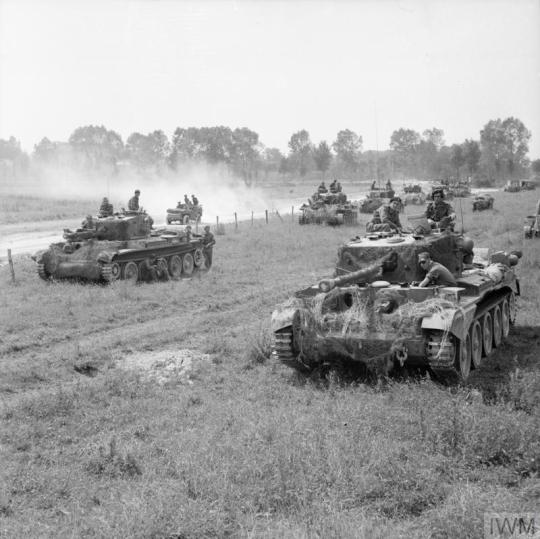
Les chars Cromwell de la 7e Division blindée britannique se préparent à attaquer Caen par la rive Est de l'Orne – Bataille de Caen – Opération Goddwood – Bataille de Normandie – Calvados – Normandie – France – 18 juillet 1944
Photographe : Sergent Laing - No. 5 Army Film and Photo Section, Army Film and Photographic Unit
©Imperial War Museums - B 7649
#WWII#Opération Overlord#Overlord#Bataille de Normandie#Battle of Normandy#Bataille de Caen#Battle of Caen#Opération Goodwood#Goodwood Operation#Armée britannique#British Army#7e Division blindée britannique#7th Armoured Division#Char#Tanks#Char de cavalerie#Cruiser tank#Char Cromwell#Cromwell tank#Calvados#Normandie#Normandy#France#18/07/1944#07/1944#1944
39 notes
·
View notes
Text
Roads to Falaise: Cobra and Greenwood Reassessed :: Ken Tout
Roads to Falaise: Cobra and Greenwood Reassessed :: Ken Tout
Roads to Falaise: Cobra and Greenwood Reassessed :: Ken Tout soon to be presented for sale on the inspired BookLovers of Bath web site! Stroud: Sutton Publishing, 2002, Hardback in dust wrapper. Includes: Black & white photographs; Maps; References; From the cover: The twin armoured advances of Goodwood and Cobra, unleashed six weeks after the Allied landings in Normandy in June 1944, were…

View On WordPress
#0-750-92822-0#battle falaise gap#books written by ken tout#bradley#caen#first edition books#france campaigns#french operations#gpb pip roberts#hans von luck#hebecrevon#john cloudsley thompson#london bridge orne#mont castre#montgomery#normandy campaign#operation cobra#operation goodwood#patton#werner wolff
0 notes